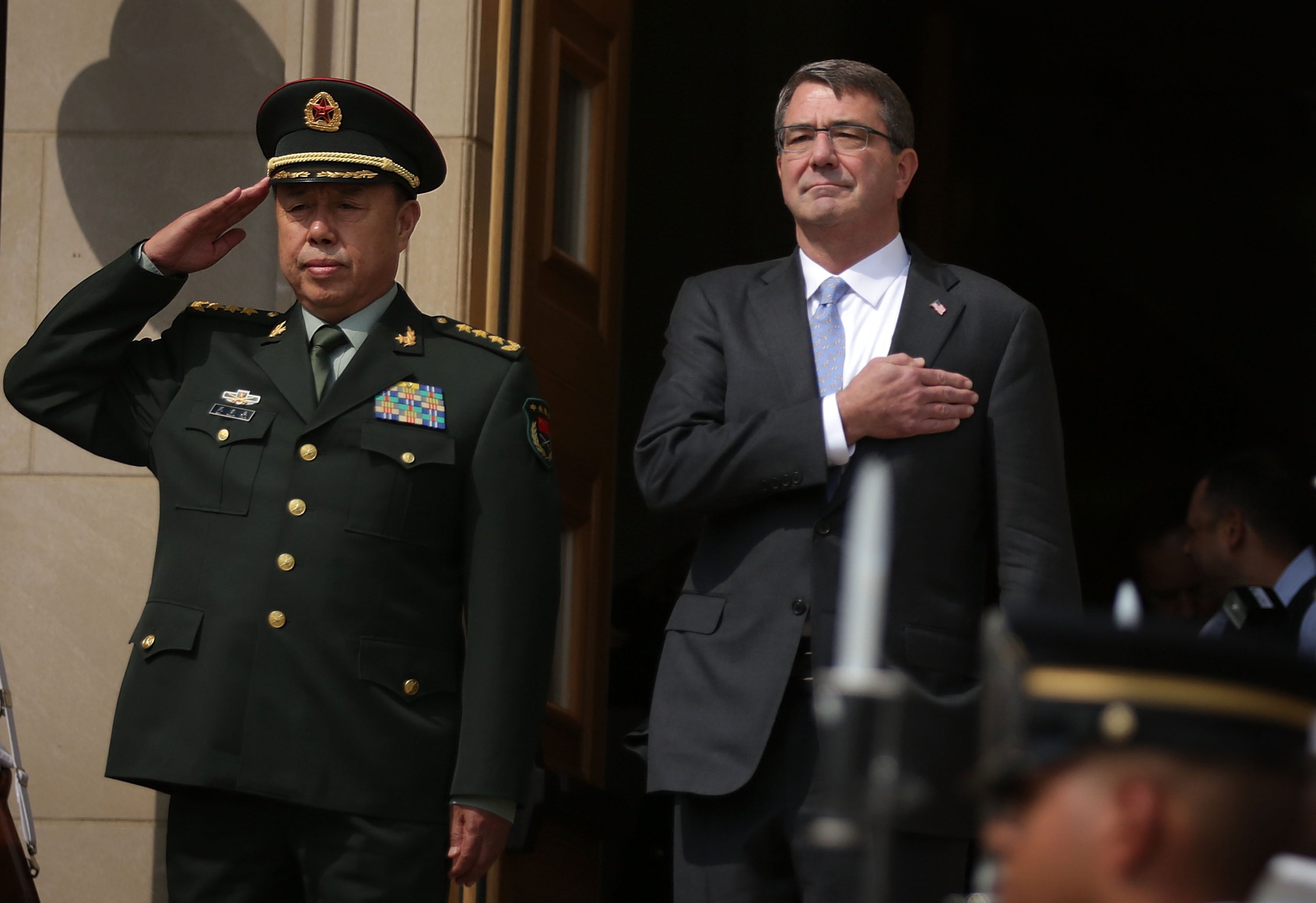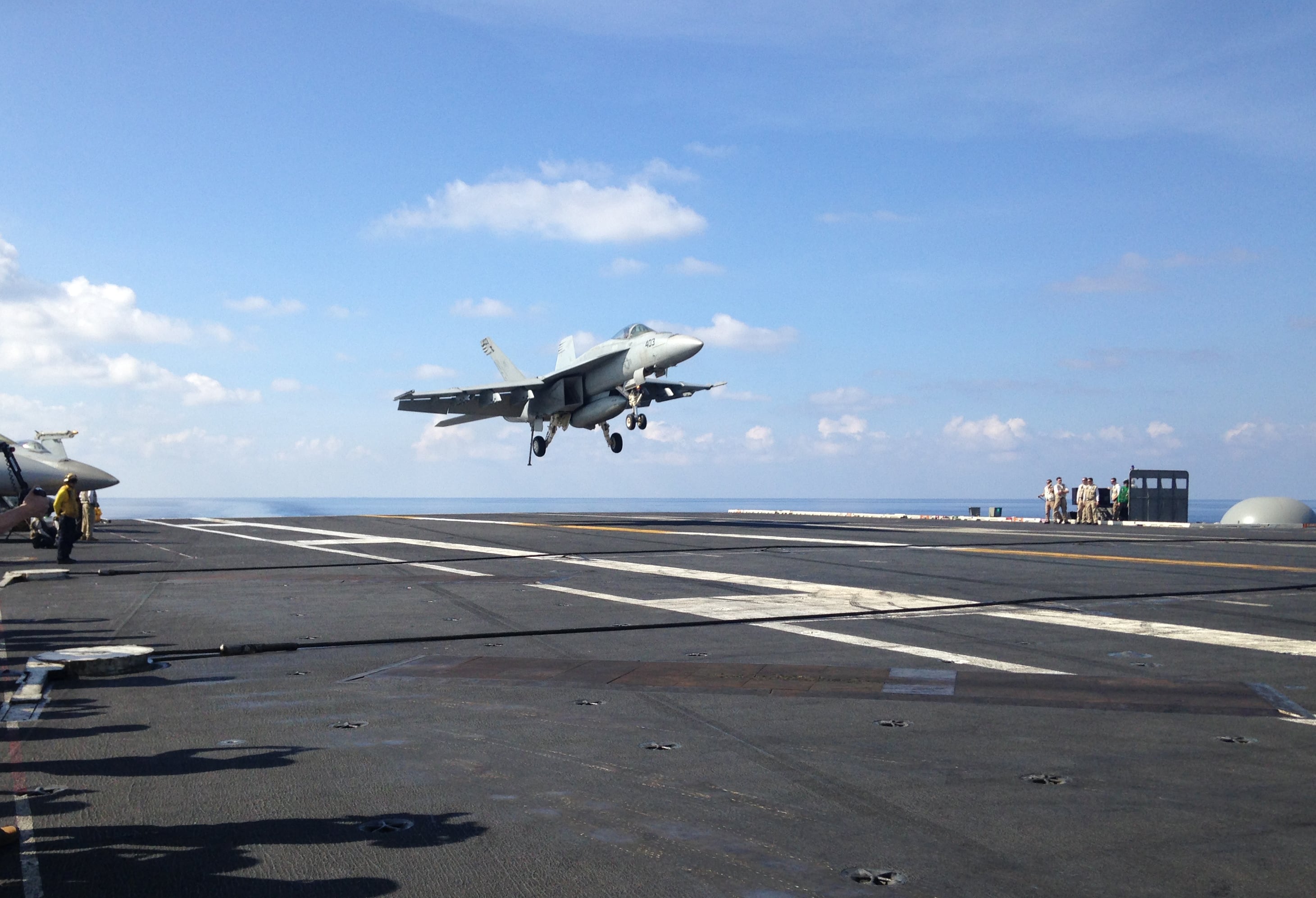BEIJING (AP) — China's second-ranking general recently visited the country's man-made islands in the South China Sea, the Defense Ministry said Friday, underscoring China's defiance in the face of calls by the U.S. and others to cease construction work that they say is raising tensions in the region.
According to the brief statement, Gen. Fan Changlong led a group of military commanders to the Spratly island group to visit troops and observe construction work. The statement didn't say when and where Fan, a vice chairman of the Central Military Commission that controls the People's Liberation Army, visited.
The announcement comes after China issued an angry response to what it says are provocative plans announced Thursday that the U.S. would send troops and planes to the Philippines for more frequent rotations and will increase joint sea and air patrols with Philippine forces in the South China Sea.
China says it will "resolutely defend" its interests and accuses the two longstanding allies of militarizing the region and harboring a "Cold War mentality."
"The joint patrols between the United States and the Philippines in the South China Sea are militarizing the region and are non-beneficial to regional peace and stability," said a statement posted to the ministry's website late Thursday. "The Chinese military will pay close attention to the situation, and resolutely defend China's territorial sovereignty and maritime interests."
China claims virtually the entire South China Sea as its territory and is building man-made islands there topped with airstrips and other infrastructure. The Philippines, Vietnam and others also claim territory controlled or claimed by China, and increased military and coast guard deployments by all sides could increase the potential for conflict.

On June 11, 2015, Secretary of Defense Ash Carter, right, and Gen. Fan Changlong, currently China's second-ranking general, listen to the U.S. national anthem as they participate in an honor cordon at the Pentagon in Arlington, Va.
Photo Credit: Alex Wong/Getty Images
The South China Sea dispute also featured in talks between Chinese Premier Li Keqiang and Malcolm Turnbull, the prime minister of close U.S. ally Australia, which is trying to balance security needs with its economy's reliance on the Chinese market.
"We've always had good and constructive discussions but our position is that all claimants — all claimants — should settle disputes peacefully and in accordance with international law," Turnbull told reporters in Beijing on Friday, a day after his meeting with Li.
In reporting on Fan's visit, the ministry said China had completed work on five lighthouses, four of which are now operational, in the Spratlys, saying those were built to "provide a public service for the international community." Work on a weather station, ocean monitoring center, oceanographic equipment and other facilities was also "proceeding smoothly," the report said.
Also on Friday, Defense Secretary Ash Carter visited an aircraft carrier during a trip to the region that does not include a stop in China.

An FA-18 jet fighter takes off on the aircraft carrier John C. Stennis in the South China Sea on April 15. Defense Secretary Ash Carter visited the aircraft carrier during a trip to the region.
Photo Credit: Lolita C. Baldor/AP
Beijing and Washington have repeatedly traded accusations over who is responsible for raising tensions in the South China Sea, with the U.S. citing China's island-building project and efforts to block other claimants from parts of the crucial waterway, through which passes more than $5 trillion in global trade each year.
Su Hao, an international relations expert at Beijing's China Foreign Affairs University, said that Beijing anticipates the U.S. will eventually launch joint patrols with other nations to further challenge China's position in the South China Sea.
"The U.S. has been taking all kinds of actions to provoke China, forcing it to take counter-actions that will result in an escalation of the situation," Su told The Associated Press.
Associated Press video journalist Aritz Parra and researcher Yu Bing contributed to this report.




